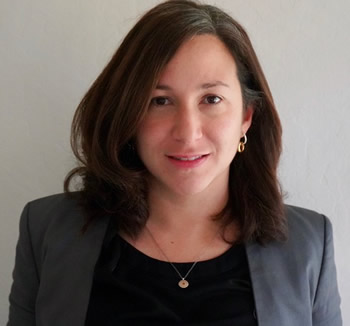Dr. Nicole MartinezWritten by Jennifer Porat  Dr. Nicole Martinez, an Assistant Professor at Stanford University, spends her days navigating the ever-changing jungle of mRNA modifications. Drawn to RNA biology from the beginning of graduate school, Dr. Martinez earned her PhD studying alternative splicing with Dr. Kristen Lynch at the University of Pennsylvania, and then went on to do her postdoc with Dr. Wendy Gilbert at Yale University investigating pre-mRNA pseudouridylation. Uniting both scientific passions, Dr. Martinez’s newly opened lab is studying how the dysregulation of RNA modification and mRNA processing can impact development and diseases. On the impact she hopes her research will have, Dr. Martinez explained, “We hope that our work will uncover fundamental mechanisms of gene regulation mediated by RNA modifications that are used to control cellular functions. By studying how these mechanisms go awry in disease contexts, we could be one step closer to therapeutic interventions.” Dr. Martinez was finishing up her PhD just as the mRNA modification field was beginning to take off with the development of new methods to detect RNA modifications. She recalls, “It was so exciting to me that this could represent a new layer of gene regulation on top of primary sequence. I was really intrigued by the possibility that chemical modifications to RNA could alter the extensive RNA-Protein and RNA-RNA interactions that are important for splicing to tune gene expression programs.” Dr. Martinez’s hypothesis paid off, resulting in her tour-de-force postdoctoral work uncovering a role for pseudouridine synthases titled “Pseudouridine synthases modify human pre-mRNA co-transcriptionally and affect pre-mRNA processing.” Continuing along the path she forged during her postdoc, trainees in Dr. Martinez’s lab are exploring how mRNA modifications influence pre-mRNA processing, including splicing. Dr. Martinez said, “One of the most fulfilling parts of science is being the first to witness an exciting new result. Turns out it is even more exciting to be the second and to have your trainees experience that joy of discovery.” While Dr. Martinez is already a rising star in the RNA world, she admitted that she struggled with navigating insecurities. Fortunately, she was able to overcome this challenge with the help of “supportive mentors that believed in me and helped me build confidence.” Notably, a mentor wisely suggested that she “close the bar” at RNA meetings. Dr. Martinez explained, “One of the most important parts of the RNA meetings was engaging in scientific discussion, building community, launching collaborations, and making new friends. All of which are facilitated by the informal social gatherings that take place during meetings.” Even though day-to-day lab activities may struggle to measure up to epic RNA meetings, Dr. Martinez nevertheless advises trainees to make sure they’re having fun with research. “Some of the hardest times for me throughout my training were times when I was stuck and experiments weren’t working for a project,” she shared. “It is hard to find motivation, so take those times to explore new ideas and do experiments that are just for fun to reignite your passion for science.”
It's hard not to have a passion for science when one surrounds oneself with inspiring members of the RNA Society (if we do say so ourselves), and Dr. Martinez notes that “It is one of the most supportive scientific communities I have encountered […] I remember the RNA Society meeting in Madison in 2015 when I was a graduate student that featured a panel on the history of RNA research. I was star struck by the panel, which included Joan Steitz, Christine Guthrie, and Jean Beggs.” It goes without saying that Dr. Martinez is always excited about the annual RNA Society meeting, especially for the unique chance it brings to reunite with old friends and meet new ones. She has a special fondness for the RNA Society meeting in Quebec City in 2014, as “That was the first time I gave a talk at a meeting. I was so excited and terrified at the same time. Later that meeting I had so much fun exploring the old city and watching the sunrise with old and new friends after discovering poutine.” Dr. Martinez is hesitant to choose a favorite RNA Journal article (“there are too many to choose from,” a struggle we can all relate to), but “My first paper was published in RNA so that is certainly the most meaningful to me.” We anticipate more exciting findings to come out of the Martinez lab, and Dr. Martinez encourages trainees with a passion for RNA modifications to contact her to find out about opportunities to join her growing team. Dr. Martinez’s favorite RNA is the U2 snRNA “because it is the most modified of the spliceosomal RNA, and it is involved in both splice site selection and splicing catalysis.” You can find her on Twitter @nicolemmart or find out more about her lab at martinez.stanford.edu. |
